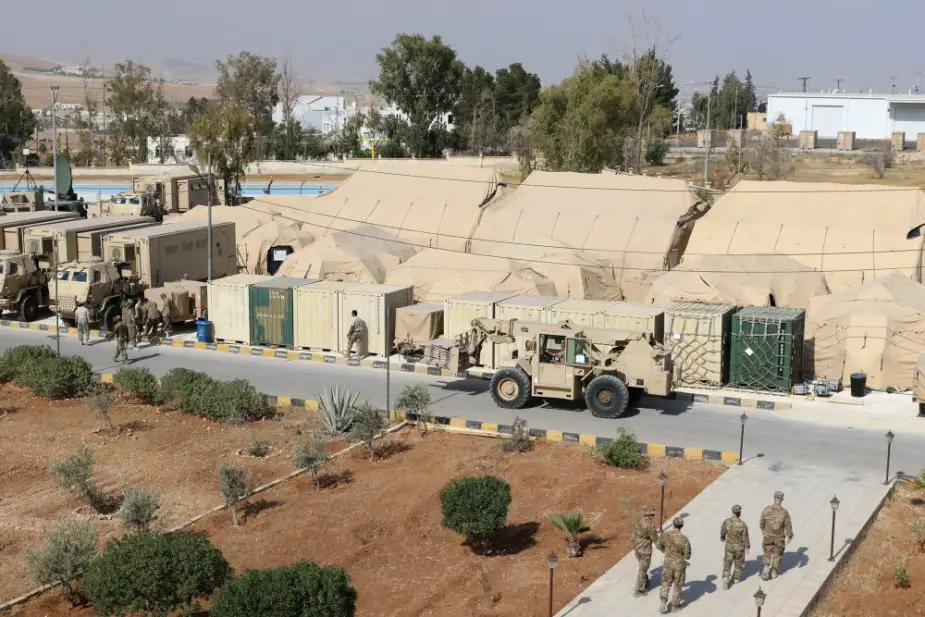Breaking news
US Army wants more mobile command posts.
There is a movement afoot to address the Army's future command post capability requirements, Kathryn Bailey, Communication-Electronics PAO, reports. In lieu of stagnant and large tent-based command posts, the Army is looking to develop smaller, mobile command posts that are agile and just as effective as their "big brothers."

"Large command posts are packed with effective mission command capabilities, but their large signature makes them more detectable," said Lisa Heidelberg, Mission Command Capabilities Division, chief for the U.S. Army Research, Development and Engineering Command Communication-Electronics Center. (Picture source: DVIDS)
"Large command posts are packed with effective mission command capabilities, but their large signature makes them more detectable," said Lisa Heidelberg, Mission Command Capabilities Division, or MCCD, chief for the U.S. Army Research, Development and Engineering Command Communication-Electronics Center. "Now that we are facing peer and near-peer adversaries, we must develop technologies that allow for more mobile, smaller and dispersed command posts. That is how we will strike the proper balance between effectiveness and survivability," she said.
The center will preview these emerging command post concepts and demonstrate its existing mobile command post technologies at its Expeditionary Mission Command Science and Technology Objective, or EMC STO, Capstone event, scheduled for July 19, at Aberdeen Proving Ground, Maryland. The event brings to a close the three-year EMC STO initiative, where the Communication-Electronics Center produced multiple, Soldier-vetted mobile command post technology prototypes that have laid the groundwork for command post modernization.
As the Army's applied research and advanced technology development center for command, control, communications, computers, surveillance, intelligence and reconnaissance -- or C4ISR -- innovation, the center develops and matures capabilities that support Army Modernization priorities and enable tactical overmatch for the joint warfighter. "Mission Command is the critical integrator to every combat operation," said Chris Manning, director of Communication-Electronics Center's Command, Power and Integration Directorate. "Our expertise in this area uniquely positions us to look at the Army's command post requirements holistically, assess risk, inform the Army of what's possible and provide options."
The command post demonstrators, all featuring mobile capabilities, range from fully integrated "command post in a box" shelters that can be vehicle-transported and unloaded to "pull out" command posts that can be set up from the back of a tactical vehicle with folding tables, monitors, power supplies and mission command capabilities.
These are powered by another critical STO component -- the Energy Informed Operations, or EIO, management system. EIO uses an intelligent microgrid to allow Soldiers to interactively monitor, manage and distribute power.
"We've shaped our EMC STO capabilities based on the soldier feedback during training events and, so far, the feedback has been positive," said Cyndi Carpenter, a branch chief in the MCCD. "In fact, the Observer Controller/Trainers at the National Training Center in Fort Irwin, California, continue to use our Tactical Computing Environment software situational awareness and collaboration software as their exercise control tool." TCE has officially transitioned to the Program Executive Office for Simulation, Training and Instrumentation, noted Carpenter.
Looking to the future, the event will also feature emerging capabilities for seamless, uninterrupted mission command that will untether the commander from the command post. These include unified voice management for two-way voice interoperability among disparate command post voice technologies; enhanced "hands free" gesture-and-voice-activated applications; analog to digital capabilities; a man-packable blue-force tracking device; and software to reduce the size, weight and power of command post displays, said Tyler Barton, Communication-Electronics Center's Command Post lead.
"With additional research and development, we believe we can convert these future concepts into capabilities, but we don't get to 'effective' and 'survivable' without mobility," he said.
The EMC STO, which supports the Network Cross-Functional Team, is partnered with the U.S Army Training and Doctrine Command and has been executed under oversight from the Warfighter Technology Council. Output from the EMC STO has already informed the Army's future command post requirements, and many of the technologies have transitioned, or will soon transition, to Army Programs of Record.
Manning said he is proud of the capabilities this three-year effort has yielded, but stresses that it is imperative for the Army to continue building on this work. "We must keep pushing the realm of the possible," Manning said, "so that our Soldiers have the tools they need to successfully complete their missions and return home safely."
The Communications-Electronics Research, Development and Engineering Center is part of the U.S. Army Research, Development and Engineering Command, which has the mission to provide innovative research, development and engineering to produce capabilities that provide decisive overmatch to the Army against the complexities of the current and future operating environments in support of the joint warfighter and the nation. RDECOM is a major subordinate command of the U.S. Army Materiel Command.


























